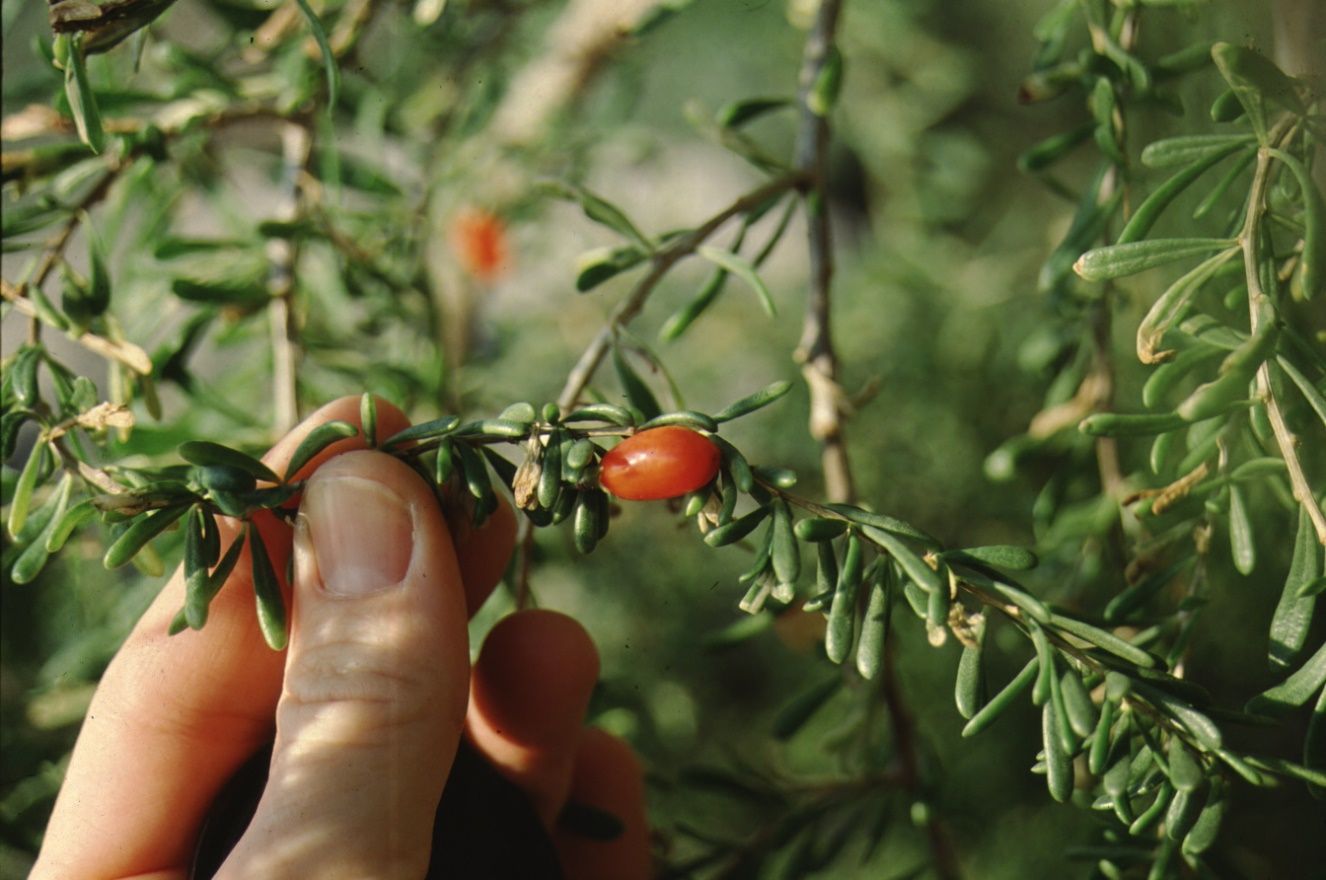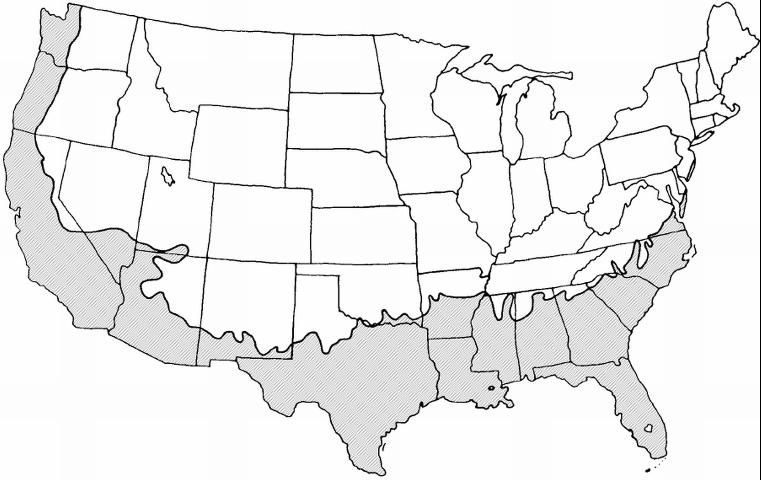Introduction
Lycium carolinianum is a small shrub that is commonly found in the southeastern United States at the edge of salt marshes and on sandy shell mounds. This 6 to 10 foot tall shrub has rigid branches that are sharply thorn-tipped. The tiny deciduous leaves of this plant are succulent and linear to oblanceolate in shape. Flowers are solitary in the leaf axils and are borne on slender flower stalks. These autumn flowers are blue, white, or lavender and have purple streaks. The flowers are followed by large, bright, lustrous red berries that ripen in late autumn or early winter. Birds love to eat the ripe berries.

Credit: Edward F. Gilman, UF/IFAS

Credit: Edward F. Gilman, UF/IFAS

Credit: Edward F. Gilman, UF/IFAS

Credit: Edward F. Gilman, UF/IFAS
General Information
Scientific name: Lycium carolinianum
Pronunciation: LYE-see-um KAIR-roe-lin-nee-AY-num
Common name(s): Christmas berry, Carolina desert-thorn
Family: Solanaceae
Plant type: shrub
USDA hardiness zones: 7B through 11 (Figure 5)
Planting month for zone 7: year round
Planting month for zone 8: year round
Planting month for zone 9: year round
Planting month for zone 10: year round
Origin: native to Florida
Invasive potential: native plant that often reproduces into nearby landscapes
Uses: border
Availability: grown in small quantities by a small number of nurseries

Credit:
Description
Height: 4 to 8 feet
Spread: 3 to 6 feet
Plant habit: vase shape
Plant density: moderate
Growth rate: moderate
Texture: fine
Foliage
Leaf arrangement: alternate
Leaf type: simple
Leaf margin: entire
Leaf shape: oblanceolate
Leaf venation: none, or difficult to see
Leaf type and persistence: evergreen
Leaf blade length: less than 2 inches
Leaf color: green
Fall color: no fall color change
Fall characteristic: not showy
Flower
Flower color: blue; white; yellow
Flower characteristic: summer flowering; fall flowering
Fruit
Fruit shape: oval
Fruit length: 3 to 6 inches
Fruit cover: fleshy
Fruit color: red
Fruit characteristic: attracts birds
Trunk and Branches
Trunk/bark/branches: thorns present; not particularly showy
Current year stem/twig color: gray/silver
Current year stem/twig thickness: thin
Culture
Light requirement: plant grows in part shade/part sun
Soil tolerances: extended flooding; acidic; alkaline; sand; loam; clay
Drought tolerance: Unknown
Soil salt tolerances: good
Plant spacing: 36 to 60 inches
Other
Roots: sprouts from roots or lower trunk
Winter interest: plant has winter interest due to unusual form, nice persistent fruits, showy winter trunk, or winter flowers
Outstanding plant: not particularly outstanding
Pest resistance: long-term health usually not affected by pests
Use and Management
The Christmas berry makes a wonderful specimen plant and forms a nice border. Its fine texture compliments and contrasts most other plants in the landscape. It can be trained into a small multi-trunked tree for the patio or garden, or it can be grown in a container or raised planter.
The Christmas berry is very tolerant to salt spray and drought conditions and is great for coastal plantings. In addition to its native sandy dune habitat, Christmas berry can be found naturally along the edges of ponds, salty marshes, and waterways. Plant this shrub on a well-drained or wet site that receives full sun or partial shade. Non-irrigated plants drop leaves in dry weather as a drought avoidance mechanism, but the next wet period brings new leaves. Growth is thin and the plant forms an open canopy in the shade. Suckers regularly form at the base of the trunks, creating a multi-trunked thicket. These will have to be periodically removed to maintain a neat appearance.
Pests and Diseases
There are few important problems growing this native plant.